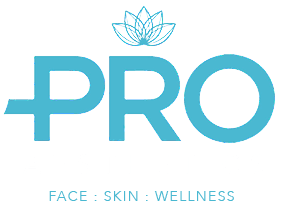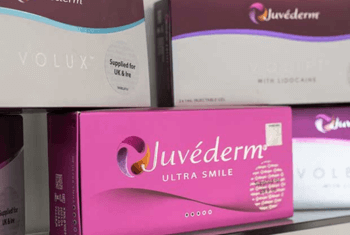Who can administer dermal fillers?
Dermal fillers are incredibly popular. They’re not just seen on celebrities and media personalities anymore; over the last two decades or so the medical aesthetic industry has grown exponentially and now safe, comfortable treatments can be delivered across the UK and the world. With filler becoming more available to everyday people like you and I, and with the growing demand for people doing it cheaply or glamorously, it’s important we make clients and the general populace aware of who can administer dermal fillers.
We think this splits neatly into two issues: who can and who should. It’s worth noting that, whilst a lot of ‘botched’ examples are lips, this guidance goes for all areas of the face, including tear trough filler, the cheeks, the chin, and jawline filler.

Who is allowed to administer dermal fillers?
So, technically, anyone can administer dermal filler – though this does not mean that anyone should.
Dermal filler products and gels are made partially from hyaluronic acid, which naturally occurs in your skin, tissues, and joints. It is a protein responsible for skin laxity, hydration, and plumpness. This is also why filler naturally breaks down over time – because it is made of a skin protein that the body metabolises anyway. Because it is biocompatible with your skin and tissues and is not a prescribed or medical substance, technically anyone is allowed to administer it.
This is why the UK has seen the emergence of non-medical professionals in the beauty industry, like hairdressers and beauticians, offering it at low prices. It is very worrying to see.
What could go wrong if not injected properly?
You could leave with poor results
It’s important to consider that a lot of reputable, accredited aesthetics training companies (like Pro Aesthetics Training, actually) only allow medical professionals to attend their courses. This means that only those able to attend the courses are learning the correct injecting techniques for the treatment. A skilled injector knows the difference in placement for a client who is seeking youthful volume with lip fillers over a client who is seeking enhanced lip borders and cupid’s bow, for example. If you have not received training in these areas, your filler results might go awry.
This is also to say that a good injector also understands that sometimes, less is more! Knowing when to say ‘no’ or to guide down an alternate path for the same-but-better results is an advanced injector’s strong suit. If your non-medical and non-trained injector hasn’t had exposure and coaching in these areas, then they’re simply going to be inflating areas of our face with no blueprint.
You could get noticeable side effects
Side effects after filler like bruising and swelling happen incredibly frequently. In much the same way you can get a tiny circular bruise from giving blood, you can from filler. One study factors that around nearly 25% of dermal filler patients experience minor bruising – and some go even higher. However, bruising can be minimised by gentle injection techniques that are, again, taught to advanced practitioners. You may still get some, as they can’t be eliminated since we are breaking the skin, but poor injection technique could see these bloom very obliviously. This is another reason you shouldn’t go to just anyone with the product for your fillers, but to a qualified medical professional.
You could develop complications…
… Like vascular occlusion. Technically, vascular occlusion is a complication is a complication that can arise from any injector, but what matters is that it’s spotted quickly and remedied.
Vascular occlusion occurs when the dermal filler is injected into a vein or blood vessel by mistake. It is by no means a common side effect or complication. In fact, one study showed that as little as 0.05% of filler cases result in vascular occlusion. It’s symptoms can be the same as standard side effects (i.e. bruising and swelling) but they do not recede and they appear more aggressive. Because of this, someone with no medical qualifications and no formal aesthetic training may interpret this complication as a regular or slightly more pronounced case of filler side effects, not as something that is harming blood flow to the area. A case in 2023 saw a female patient experience excessive swelling and pain for 3 months which she was assured was normal by a non-medically-trained injector.
Your swelling for dermal filler should usually subside within 24 hours but could last up to a couple of days after treatment. If the treated area feels hot, itchy, painful, lumpy, or still swollen after this time, it’s recommended you contact your original injector. To treat this, we can dissolve filler using hyalurondaise. What is important to note here is that if you describe escalated symptoms to a medical professional, they will recognise that the treatment has not gone as intended, and can remedy it for you. For non-medical injectors, they may fail to register the issue.
Who should administer your dermal filler?
The only people who should be performing these treatments are qualified medical professionals (Doctors, Dentists, and Nurses) who have received medical aesthetics training. They are the best placed to understand side effects, complications, possible reactions, and the best placed to understand your desired results through their exposure and training.
Ultimately, you should be able to say in good faith that your injector knows what they are doing and your trust them.

Here are some pointers on how to look for a safe injector:
Take part of the assessment of your treatment into your own hands to better understand just who you are seeking.
- A medical professional, at the bare minimum.
- Look for someone or a business that has a website and social media – you are not looking for someone covert.
- Look for their reviews – Facebook and Google Business Profile reviews are a very easy place to start and you can easily quantify how many people have trusted them before.
- Look for their accreditation – besides their medical qualifications, do they have other accreditation on their website? For example, we display the logo of Aesthetic Complications Experts (ACE) because we are affiliated with them.
- Look for their history – if they have been injecting for a little while, or have been established for a while, then they have plenty of experience.
- When arriving at your appointment, look around you at your setting: is it clean, are they wearing gloves for your appointment?
- Lastly, find someone that will say ‘no’ to you if they have to. This could save you a lot of bother in the future, if the consultation is open and honest!
Here are some questions to ask at your consultation, to make sure you’re comfortable
These examples can help you get to know your injector, but also to set your own expectations.
- How long have you been doing this?
- Which brands of filler do you use?
- Have you had to manage any complications before?
- What is the correct amount of filler for me?
- Will I achieve my desired results in one appointment?
- Who should I contact if I’m experiencing unforeseen side effects?
It’s very important to us at Pro Aesthetics in West Bridgford that our clients feel safe, seen, and listened to. We always insist on a consultation before treatment and sometimes even a cooling off period to ensure that you feel comfortable with both the treatment you’re receiving and who is administering it. If you’re interest in lip fillers in Nottingham, our clinic boasts only medical injectors and we’d love to welcome you in. Contact us to book online or simply call the clinic directly to book your consultation.

